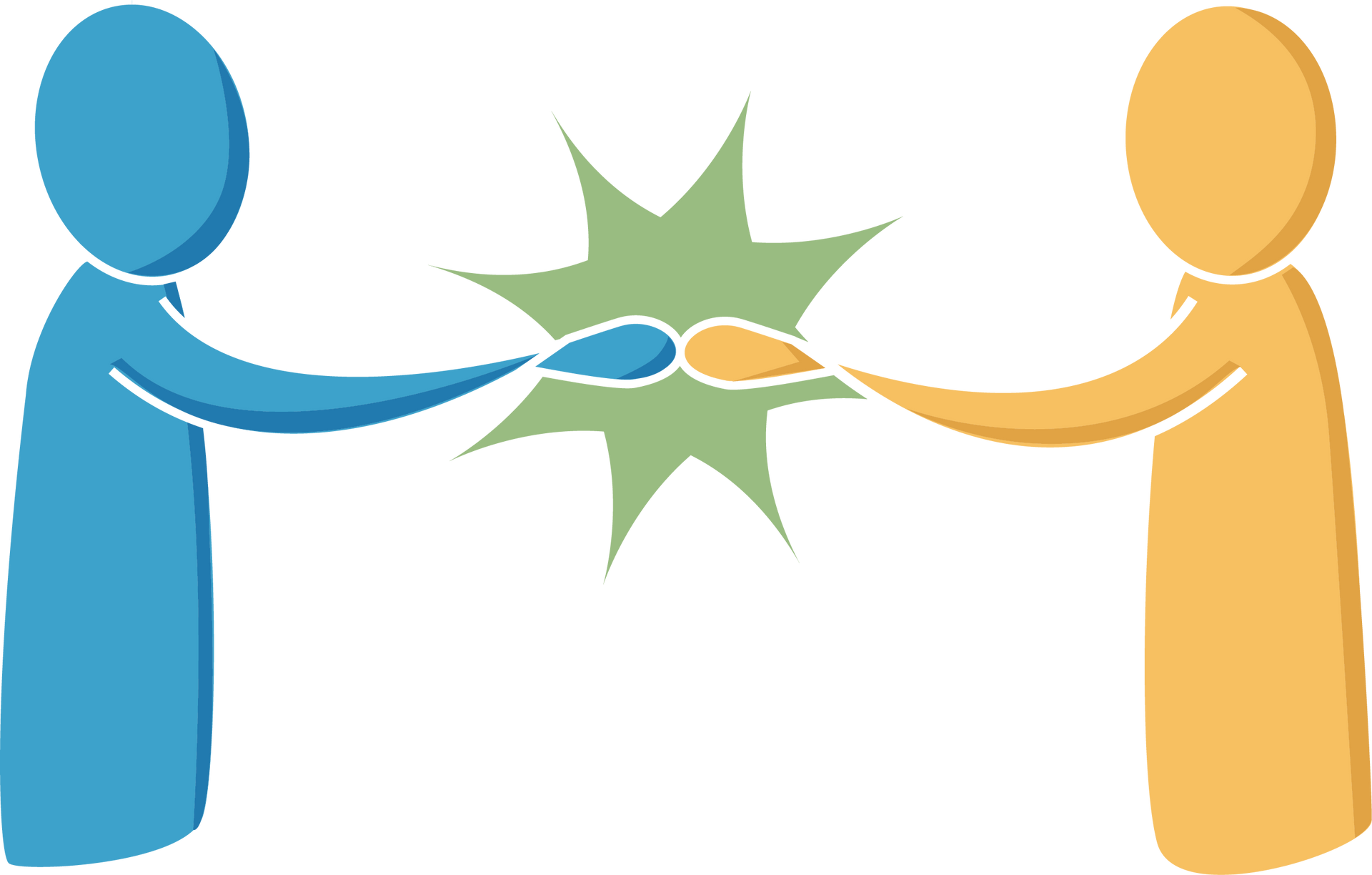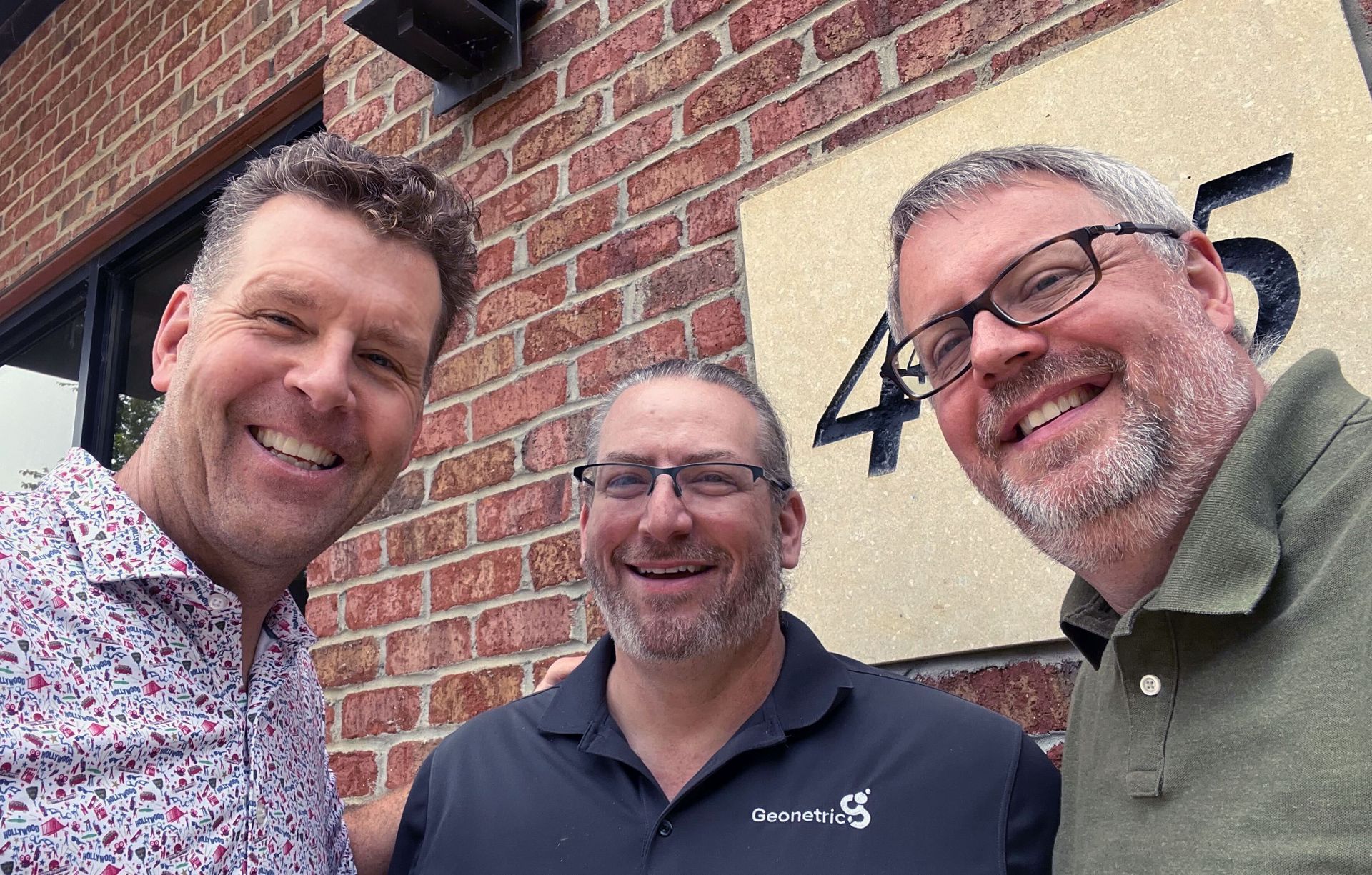ALJ Case Study | From Frustration to Flow: How Geonetric Rebuilt its Culture and Capabilities
In the early 2000s, Geonetric was a growing company navigating the chaotic realities of early success.
The Cedar Rapids-based digital marketing agency had carved out a successful niche helping hospitals build web solutions, but a combination of success and rapidly advancing technology was straining the company’s internal systems. “We were stumbling from problem to problem,” said Geonetric founder Eric Engelmann.
What followed was a bold, organization-wide experiment in leadership, agility, and cultural reinvention—one that still shapes how Geonetric operates more than a decade later.
The Situation at Geonetric
Founded in 1999, Geonetric started as a small web development firm but quickly evolved into a successful digital marketing agency serving the healthcare industry. With this rapid success came serious growing pains. What once worked—quick-response, high-touch, client-specific solutions—began to break down.

Engelmann’s team became buried in a backlog of redundant code and fragmented systems as their client list grew. Clients and their requests for customizations kept coming; they were hooked on personalized service. And because their needs kept shifting, the platform was always a step or two behind. “It wasn’t scalable,” recalled Engelmann. “It was a disaster.”
Engelmann and the Geonetric leadership team knew it wasn’t just a technical issue—it was a strategic and cultural one. They attempted to right the ship for nearly two years, with little success. “Something had to change,” said Engelmann.
Finally, Engelmann was encouraged to contact Pete Behrens, Agile Leadership Journey founder and CEO, for help.
“Eric didn’t lack vision. He didn’t lack talent,” said Behrens. “But like many leaders, he struggled to say no to his stakeholders. He was trying to please everyone, keep every promise, and avoid the hard conversations.”
After their initial connection, Behrens traveled to Geonetric’s Iowa headquarters to meet the team, and together they embarked on their comprehensive agile transformation.
The Solution
Behrens spent his first days with Geonetric assessing where the organization needed to focus its efforts.
“When I met Eric, Geonetric had been on a path for two years, repeatedly stumbling while trying to build a platform for its customers. When I came in, we started at the beginning: What’s going right? What’s the current state of things? Where are you, but more importantly, where do you want to be?”
Continue reading below...

Download the Complete Case Study
Behrens facilitated a deep dive with Engelmann and the Geonetric leadership team, enabling them to identify and make sense of the core organizational challenges.
“In my head, I envisioned two lines on a chart,” explained Behrens. “I saw the line of the platform getting developed, a velocity line, and I saw the line of new work being requested by clients. Unfortunately, the lines weren’t coming together; they were diverging. I shared with Eric that he was losing ground because one line was going up faster than the other. I knew we needed to help him visualize it, so we put everything up on the wall. Suddenly, the mountain they were trying to climb came into focus.”
Seeing a conference room practically wallpapered in index cards full of backlog items was overwhelming. But it was time to get to work and do the most difficult thing: say no to clients. As Engelmann redirected Geonetric’s full focus toward building a new platform, he worked with Behrens on building internal awareness, visibility, and the capability to manage complexity in new ways.
First, Behrens made sure that the Geonetric team knew that this would be a co-created journey, not a dictated step-by-step process. Everything from larger shifts, such as a restructuring to a flatter organizational structure, to more pragmatic approaches like implementing Scrum to manage the company’s backlog of projects, would be done collaboratively.
As he deepened his work within the organization, Behrens introduced the Geonetric team to new ways of thinking about leadership, systems, and value delivery. He worked not just with software teams, but with everyone, including sales, marketing, and operations.
“Everybody needed to understand this. It couldn’t just be a tech thing,” Engelmann said.

As the transformation continued, Geonetric’s previously siloed departments began doing multidisciplinary work. This not only changed how people worked but also how they worked across teams and disciplines. Instead of pointing fingers, errors were now problems to solve together.
“[Mistakes weren’t] a secret that you had to desperately prevent someone from knowing. It became normal for the team to say, ‘Yeah, we screwed up. Let’s figure out how to get past that,” Engelmann said.
Previously, Engelmann had been the one to provide company-wide status updates, but realized how much more impactful it would be to hear the employees share their own work.
“They don't have to be a showman or showwoman. They just have to be able to tell a story that says, ‘Here’s what we did, here’s what worked, here's what we learned from it, and what we're going to do differently next time.” Engelmann noted. “Further, the onus [to hold each other accountable] moved from being on me to being on the team. They got better just by doing retrospectives and talking about the work they were doing. That was important.”
Those retrospectives, along with standups and sprints, became more than just calendar events—they became vehicles for self-accountability, learning, and trust. Employees began presenting outcomes directly during company all-hands meetings, including those related to financial performance and customer impact.
The Results
Geonetric and Engelmann’s story is one that many can probably identify with—the struggle around choosing different strategies and, in this case, the fear of what happens when no choices are made at all. Leaders end up letting both things happen, and then nothing happens.
Some clients and team members were initially reluctant, but Engelmann’s newfound clarity paid off. The platform launched, clients adapted, and the company emerged stronger.
The most compelling results Geonetric reported include:
- Post-transformation client satisfaction
scores were the highest in company history.
- Development
speed increased, with software releases becoming more frequent and predictable, at twice the speed of previous efforts.
- Communication improved, workplace politics declined, and
teams learned to self-correct without managerial intervention.
- Decision-making became faster and
more aligned with customer value.
- Team ownership increased, with
employees embracing transparency, peer feedback, and continuous improvement.

While Behrens spent the bulk of his time working with Geonetric’s teams, he had regular check-ins and one-on-one coaching sessions with Engelemann.
“Eric was more than happy to stay engaged and involved and took responsibility. I don’t see that with every C-level leader. Really, there are two success stories here. I look back on it as the Geonetric story—and the Eric story. Yes, ALJ aligns teams to work differently and reach goals, but we simultaneously nurture the individuals involved along the way. Transformations are inspiring, at any size or scope.”
“The results showed themselves. That platform they wanted to build? They did it successfully, and the organization grew substantially from there, which is great! But beyond that is what Eric came away from Geonetric with,” Behrens said, referring to Engelmann’s path after Geonetric, where he was able to step away from his CEO role and launch New Bohemian Innovation Collaborative, a startup incubator and tech education hub for local high school students.
A Legacy of Lessons Learned
While ultimately Geonetric’s transformation was a success, it wasn’t without missteps. “We pushed the pendulum too far at times,” Engelmann acknowledged. Conflict resolution was sometimes difficult without a traditional managerial hierarchy, and some highly skilled but risk-averse employees chose to leave. But Engelmann believes it was worth it.
“We learned that when you give people the tools and visibility they need, they can do really great work,” he said. “But you also need to support them through that change.”
Geonetric continues to thrive even after Engelmann stepped away to pursue new ventures, but he remains a member of Geonetric’s board—evidence that agility has become ingrained in the organization’s culture. It continues to serve hospitals across the country, delivering software and marketing services with the same spirit of transparency and autonomy.
Engelmann credits what he learned from Behrens for much of his success and current work as a startup investor and advisor. “The spark Pete lit is still burning,” he says.
Will ALJ's next case study be your organization's success story?
Geonetric’s story isn’t about software or structure—it’s about what happens when leaders commit to rethinking how value is delivered.
If your organization is facing stalled growth, siloed teams, or cultural tension, Agile Leadership Journey can help.






